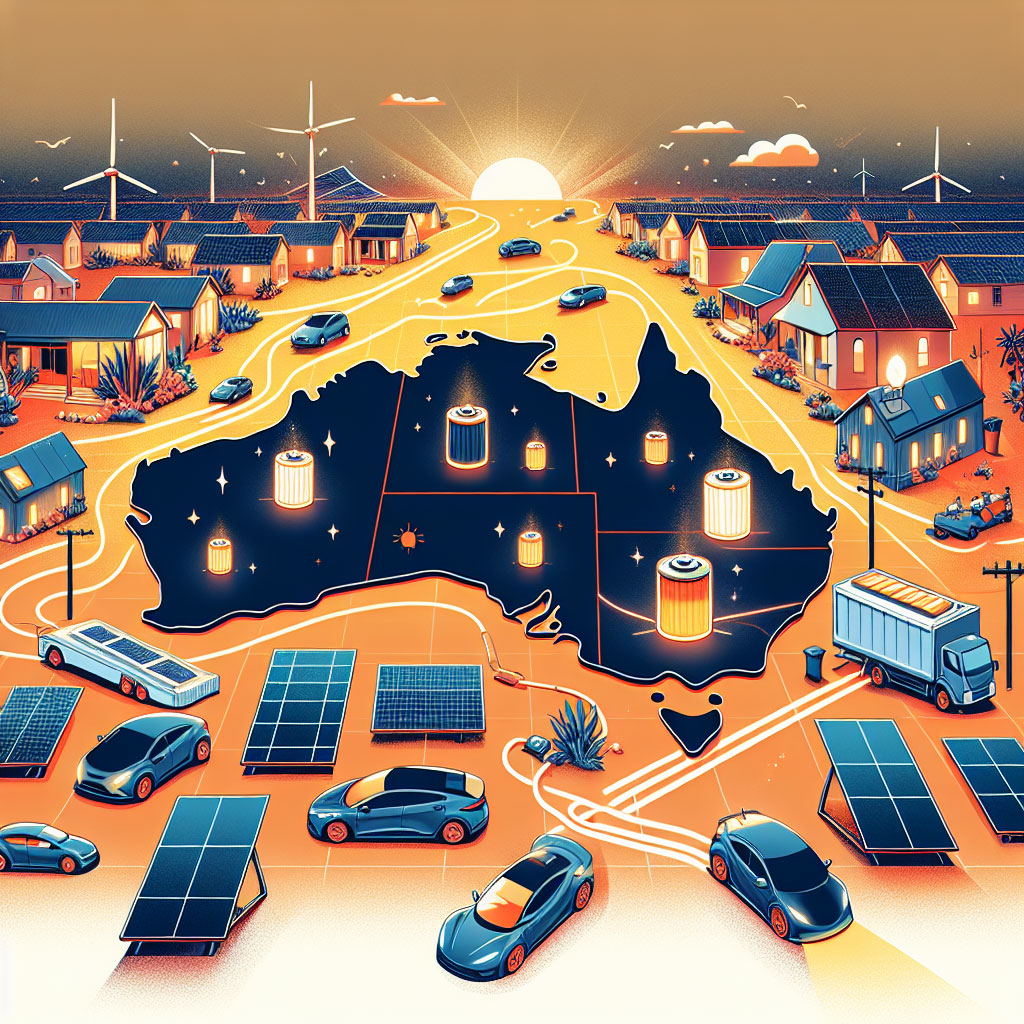
Australia’s electric-vehicle market is maturing rapidly, with an expanding choice of affordable models aimed at mainstream buyers. For many shoppers the headline figure – the driveaway price – is the first decision point, but it’s only part of the picture. Below we rank the 15 cheapest electric vehicles (EVs) available in Australia by starting price, and provide practical context to help readers assess value beyond sticker shock.
Note: Prices shown are the manufacturer’s base (starting) price and do not include stamp duty, registration, dealer delivery fees, luxury car tax or other on-road costs. Range figures are manufacturer estimates.
The 15 cheapest electric vehicles in Australia (ranked by starting price)
BYD Dolphin Essential – Price $29,990, Range 340 km
- Why it matters: The Dolphin Essential currently tops the entry-price list. Its compact footprint and respectable range make it an attractive urban runabout. BYD’s growing Australian dealer and service network is a selling point for buyers seeking local support.
GWM Ora Lux (2025) – Price $35,990, Range 400 km
- Why it matters: GWM’s Ora range blends retro styling with competitive range for the price. The Lux variant offers a balance of equipment and range that will appeal to buyers wanting a roomy small hatch.
BYD Dolphin Premium (2024) – Price $36,990, Range 427 km
- Why it matters: The Dolphin Premium steps up range and features while remaining very competitively priced. For buyers focused on range-per-dollar, the Premium variant often represents strong value.
MG 4 Excite 51 – Price $36,990, Range 350 km
- Why it matters: MG’s MG4 has been one of the brand’s most visible EVs in Australia. The Excite 51 balances price and usable range for everyday driving, with an appealing interior for the segment.
Chery E5 Urban – Price $36,990, Range 430 km
- Why it matters: Chery’s E5 Urban claims big range numbers relative to price. Prospective buyers should weigh brand aftersales, warranty terms and local service availability when considering newer entrants.
GWM Ora Ultra – Price $37,990, Range 400 km
- Why it matters: The Ora Ultra generally adds equipment and comfort features over lower variants, keeping range competitive while improving the ownership experience.
Fiat 500e – Price $38,990, Range 311 km
- Why it matters: The Fiat 500e brings European styling and a city-focused package. Its range is lower than many rivals, but it suits buyers prioritising design and inner-urban driving.
GWM Ora GT – Price $38,990, Range 380 km
- Why it matters: The Ora GT targets buyers wanting a sportier look and slightly enhanced performance while retaining usable range for most daily needs.
Hyundai Inster – Price $39,000, Range 327 km
- Why it matters: (Model naming as provided.) Hyundai’s presence in Australia with a known dealer network can be a reassuring factor; buyers should confirm spec levels and warranty inclusions.
BYD Atto 3 Essential – Price $39,990, Range 345 km
- Why it matters: The Atto 3 offers SUV-style packaging and a well-equipped cabin for the price. BYD’s battery and warranty credentials have strengthened its appeal.
Geely EX5 Complete – Price $40,990, Range 430 km
- Why it matters: Geely’s EVs promote long-range claims relative to price. As with other newer marques, check local support and real-world efficiency figures.
MG S5 EV 49 Excite – Price $40,990, Range 340 km
- Why it matters: The S5 EV expands MG’s EV line-up with SUV practicality. Buyers should compare equipment levels and battery warranties against similarly priced alternatives.
MG 4 Excite 64 – Price $40,990, Range 450 km
- Why it matters: The MG4 Excite 64 delivers a substantial range jump with the larger battery and can be compelling for buyers who want longer distance capability without stepping up much in price.
Chery E5 Ultimate – Price $40,990, Range 430 km
- Why it matters: The Ultimate variant of the Chery E5 adds extra kit over the Urban while retaining the strong range numbers.
Hyundai Inster Extended – Price $42,500, Range 360 km
- Why it matters: The Extended variant (as listed) provides longer range than the base version at a modest premium; check exact specifications and warranty coverage with dealers.
Price-per-kilometre of range: a quick comparison
If range is your priority, looking at price divided by advertised range gives a rough cost-per-kilometre figure that highlights value. Using the starting prices above, price-per-kilometre for these models sits roughly in the range of $86-$125 per kilometre of claimed range. That calculation is simple and doesn’t capture efficiency, usable battery capacity or long-term depreciation, but it helps show how some slightly pricier models can deliver more range for each dollar spent.
Beyond the sticker price: what to consider
- Total cost of ownership: Electricity costs, servicing and insurance typically make EVs cheaper to run than petrol cars, but variations exist by model, local electricity tariffs and driving style. If you charge at home, your per-kilometre energy cost will depend on your electricity plan and battery efficiency. Public fast-charging can be significantly more expensive than home charging.
- Charging habits and infrastructure: Australia’s public fast-charging networks (including Chargefox, Evie Networks and Tesla Superchargers for compatible vehicles) have expanded in recent years, but regional coverage is uneven. Consider likely daily driving distances and availability of home charging before buying.
- Warranty and battery coverage: Compare manufacturer warranties (including battery degradation policies) and local dealer networks for service. Longer battery warranties and straightforward nationwide servicing can add peace of mind.
- Safety and equipment: Standard safety equipment and crash-test ratings differ across models. Consult ANCAP ratings and equipment lists to ensure a vehicle meets your expectations for safety and active driver aids.
- Resale and reliability: Newer marques can offer strong initial value but may suffer uncertain resale prices. Established brands can deliver predictable service networks and resale trends, though this can vary by model and market conditions.
Practical tips for buyers
- Test-drive multiple models to assess real-world comfort, visibility and driving range.
- Ask dealers for full disclosure on inclusions, dealer delivery fees and on-road costs so you can compare true driveaway prices.
- Get clarity on warranty terms, battery degradation coverage and roadside assistance.
- If you’re a high-mileage driver, compare battery capacity, real-world consumption (not just WLTP/combined figures) and public charging speeds.
- Check for state or territory incentives: some jurisdictions occasionally offer rebates, stamp duty exemptions or registration discounts – always verify current programs directly with state transport or revenue offices.
Charging and running-cost context
- Energy consumption and cost: Typical small-to-medium EVs consume roughly 13-18 kWh/100 km in mixed driving. With a residential electricity rate, for example, of around $0.30-$0.40 per kWh (rates vary by plan and region), charging cost per 100 km is often in the low single-digit dollars to low double-digit dollars – substantially less than petrol equivalents in most cases.
- Public DC fast-charging: Useful for longer trips, but costs per kWh can be higher than home charging. Fast-charging speeds and time-to-charge will vary by model and charger capability.
Conclusion
The Australian EV market now offers genuinely affordable entry points that were unthinkable a few years ago. While the lowest sticker price is an important factor for many buyers, the best purchase decision balances price with range, local aftersales support, warranty, charging options and long-term running costs. For urban drivers looking for an economical daily commuter, the cheapest EVs on the list can make excellent sense. For those who frequently travel longer distances, paying slightly more for substantially greater range can be better value overall. As always, do your homework – test drives, clarity on out-the-door pricing and a close look at the warranty and charging ecosystem will pay dividends.
Frequently asked questions (FAQs)
Q: Are these prices driveaway?
A: No. The prices listed are manufacturer base (starting) prices. They do not include on-road costs such as stamp duty, registration, dealer delivery fees, luxury car tax (where applicable), or optional extras. Always ask your dealer for a full driveaway quote.
Q: Which of these models offers the best range for the money?
A: Range-per-dollar varies – some slightly more expensive models offer disproportionately larger ranges. Simple price-per-kilometre calculations (price divided by claimed range) can help you compare value, but remember real-world efficiency and usable battery capacity matter too.
Q: Are these ranges real-world?
A: The listed ranges are manufacturer estimates, typically WLTP or combined-cycle figures. Real-world range depends on driving style, speed, temperature, payload and accessory use (air conditioning/heating). Expect lower results in very cold or hot conditions and at sustained high speeds.
Q: What about charging infrastructure in Australia?
A: Public charging networks have expanded quickly, with charging hubs along major highways and in cities. Urban and interstate fast chargers are increasingly common, but regional and remote coverage remains limited. Home charging is the backbone for most owners.
Q: Do I get any government rebates if I buy one of these EVs?
A: Australia has no consistent national EV purchase subsidy as of mid-2024, though state and territory incentives and concessions can change. Check your state or territory government websites for the latest information on rebates, stamp duty exemptions or registration discounts.
Q: Which model is best for long-distance driving?
A: Models with larger batteries and higher claimed range (for example those in the 400-450 km range in this list) are better suited to long-distance driving. Fast-charging capability and the vehicle’s charging curve also matter – check each model’s maximum DC charging rate.
Q: How do I compare battery warranties?
A: Look for the length of warranty (years) and any kilometre limit, along with specifics on battery degradation (e.g., guaranteed capacity percentage over the warranty period). Confirm whether warranty servicing is handled nationally through dealers.
About EV Evolution
EV Evolution is the leading online platform dedicated to Australian electric vehicle owners and enthusiasts. We foster a vibrant community, delivering essential EV news and insights, and enhancing user engagement through our innovative, AI-powered chatbot for dynamic discussions. Our mission is to empower Australian electric vehicle owners and enthusiasts by fostering a vibrant, AI-driven online community that connects, informs, and advances the nation’s electric vehicle landscape.




